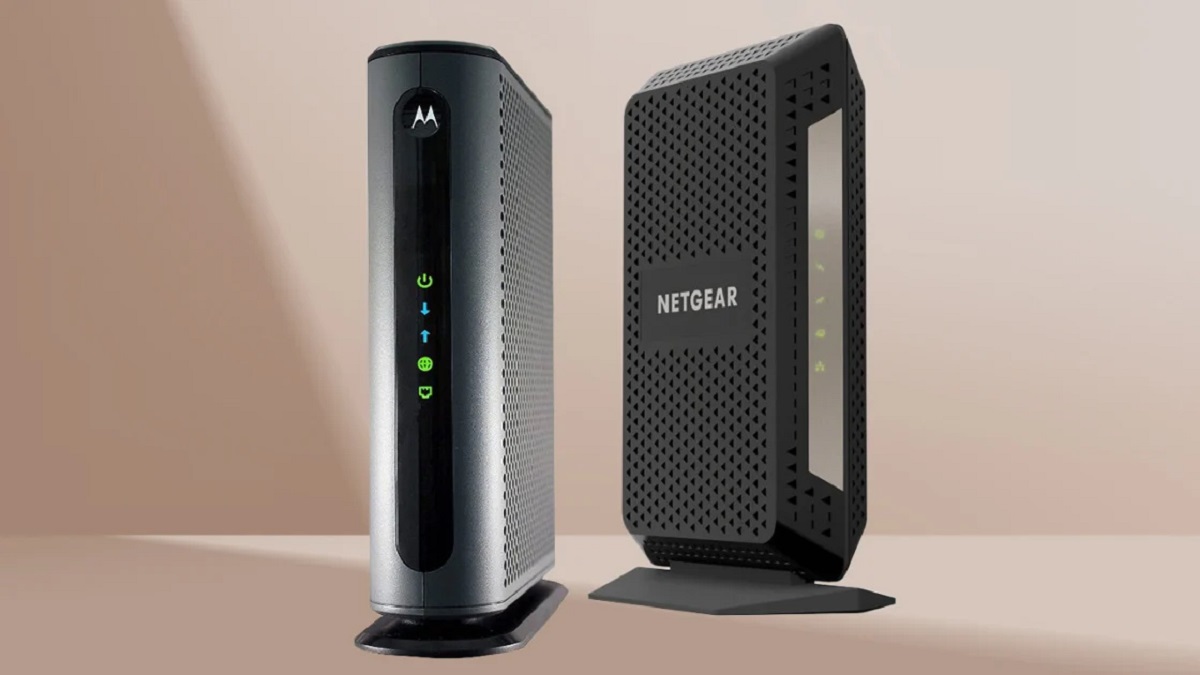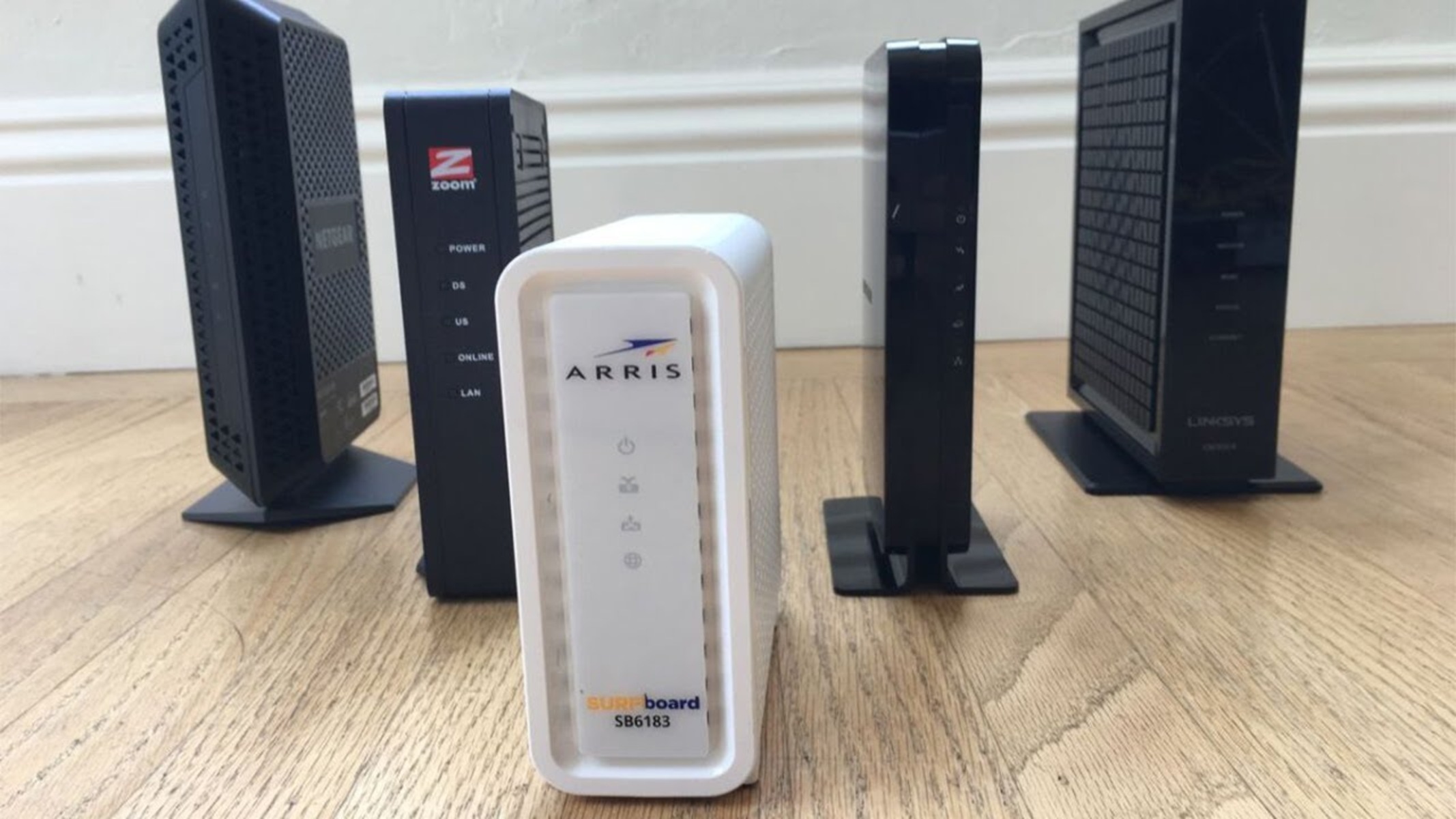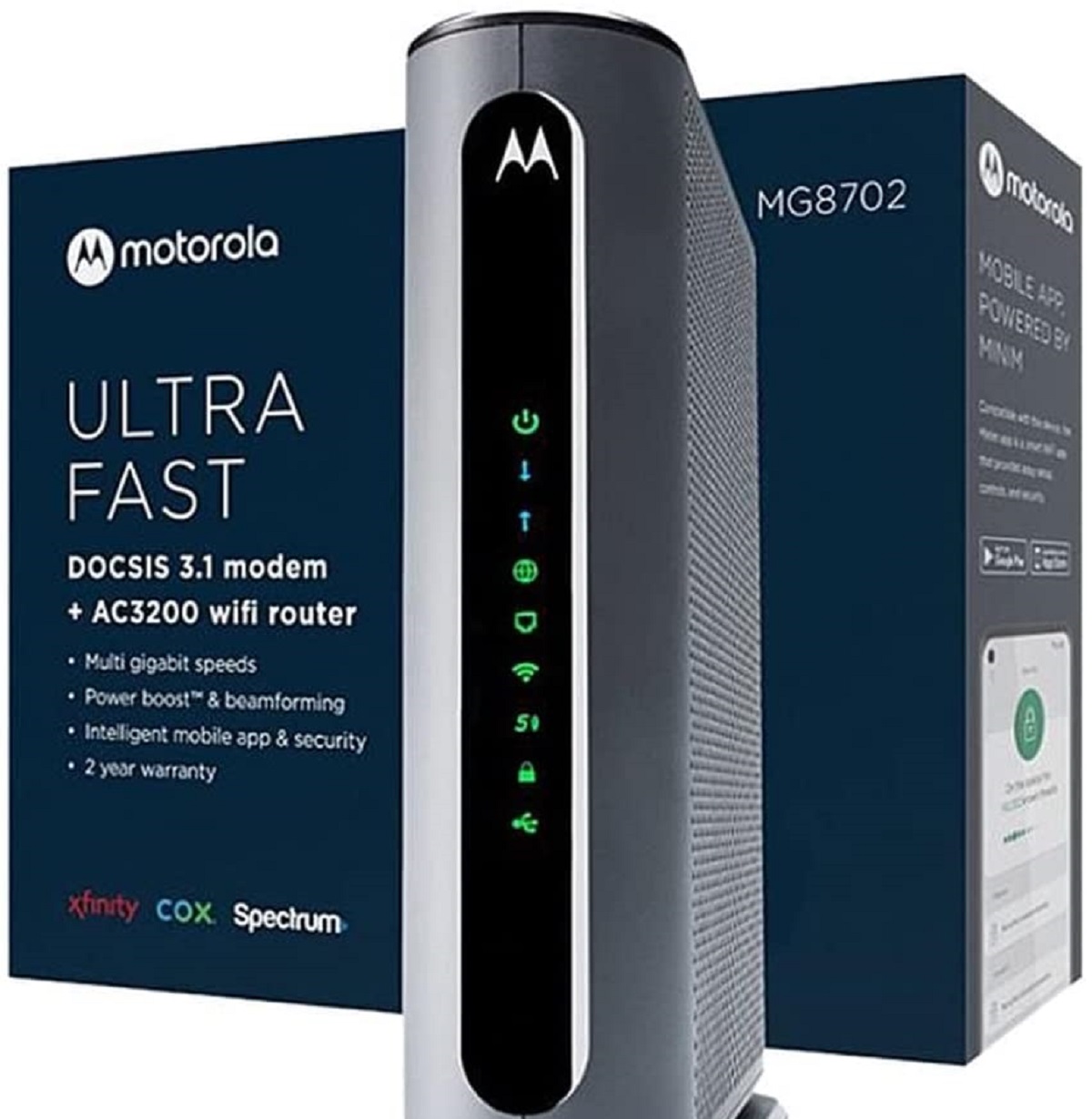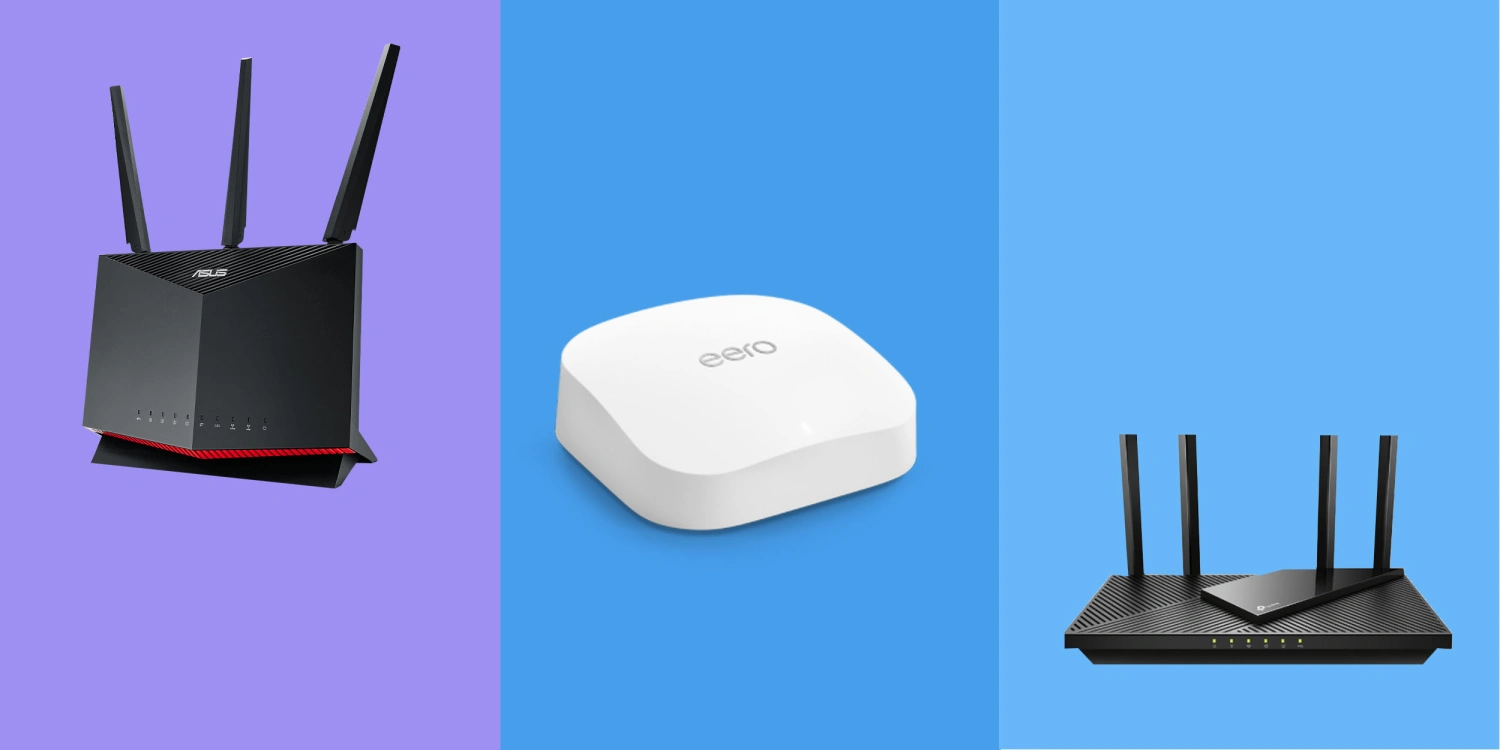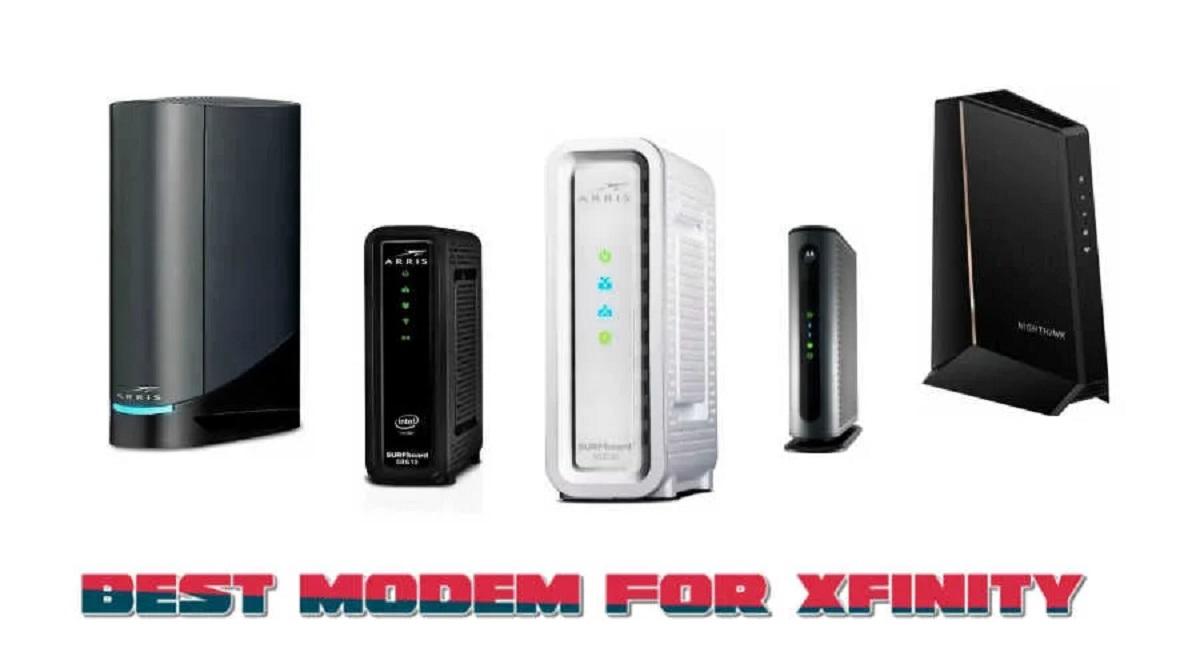Introduction
Welcome to our guide on choosing the right wireless router for Comcast! With the increasing reliance on internet connectivity, having a reliable and high-performing wireless router is essential for a smooth online experience. Comcast, one of the leading internet service providers, offers various internet plans with different speed options. To make the most of your Comcast internet connection, it’s crucial to have a compatible and efficient router.
In this article, we will walk you through the factors to consider when selecting a wireless router for your Comcast connection. By taking into account these key factors, you can ensure that you choose a router that meets your specific needs and maximizes the performance of your internet connection.
Before diving into the details, it’s important to note that Comcast supports both cable and fiber-optic internet, which they deliver to your home through a modem. A wireless router connects to the modem, allowing multiple devices to access the internet wirelessly. Therefore, choosing a wireless router that is compatible with your Comcast modem is the first step in building a reliable and efficient home network.
Now, let’s explore the factors you should consider when selecting a wireless router for your Comcast connection.
Factors to Consider
When choosing a wireless router for your Comcast connection, several factors should be taken into consideration to ensure optimal performance and compatibility. Let’s explore these factors in detail:
- Modem Compatibility: As mentioned earlier, it is crucial to choose a router that is compatible with your Comcast modem. Check the compatibility requirements provided by Comcast or consult their customer service to ensure that the router you choose can seamlessly connect to your modem.
- Internet Speed Requirements: The speed of your Comcast internet plan will determine the router’s capabilities. Consider the maximum speed supported by the router and ensure that it can handle the speed provided by your Comcast plan. This will help prevent any performance bottlenecks and ensure a smooth and lag-free online experience.
- Range and Coverage: The wireless coverage of your router is essential, especially if you have a large home or multiple floors. Look for routers with strong signal strength and a wide coverage area. Features like external antennas and beamforming technology can help improve the range and minimize dead spots in your home.
- Number of Devices: Consider the number of devices that will be connected to your wireless network. If you have a large household with multiple users and devices, opt for a router with higher simultaneous connection capabilities. This will prevent network congestion and ensure a stable connection for all devices.
- Security Features: Protecting your network from potential threats is crucial. Look for routers that offer robust security features such as WPA3 encryption, firewall protection, and guest network support. These features can help safeguard your network and keep your personal data secure.
- Dual-band or Tri-band: Dual-band routers operate on two frequencies, 2.4GHz and 5GHz, while tri-band routers add an additional 5GHz band. Dual-band routers offer good performance for most homes, but if you have many devices or require faster speeds, a tri-band router may be a better choice.
- Wired Connections: While wireless connectivity is essential, having provision for wired connections can be beneficial. Look for routers with multiple Ethernet ports if you need to connect devices directly or if you require faster and more stable connections for gaming or streaming.
- Additional Features: Consider any additional features you may need, such as USB ports for file sharing or printer connections, Quality of Service (QoS) for prioritizing specific devices or applications, and parental control options for managing and restricting content access.
By considering these factors and matching them with your specific requirements, you can choose a wireless router that is perfectly suited to your Comcast connection. Auf[m9>
Modem Compatibility
One of the first and most important factors to consider when selecting a wireless router for your Comcast connection is modem compatibility. Comcast provides internet connectivity through their modems, so it is crucial to choose a router that is compatible with your specific modem model.
To ensure compatibility, you can check the list of approved routers provided by Comcast or contact their customer service for guidance. They will be able to provide you with the necessary information regarding router compatibility and any specific requirements for your modem model.
Having a compatible router is essential for establishing a seamless connection between your Comcast modem and the wireless devices in your home. Incompatible routers may result in connection issues, intermittent dropouts, or limited functionality.
It’s worth noting that modems used in Comcast’s cable internet service typically have a coaxial cable connection, while those used in their fiber-optic service require an Ethernet connection. Therefore, when choosing a router, ensure it has the necessary ports and interfaces to connect to your Comcast modem.
Before making a purchase, double-check the technical specifications of both your Comcast modem and the router you are considering. Look for compatibility indicators such as “compatible with Xfinity” or “compatible with Comcast” to ensure a hassle-free setup and optimal performance.
Remember, modem compatibility is the foundation of a reliable and efficient home network. Taking the time to research and choose a router that is compatible with your Comcast modem will help avoid connectivity issues and ensure a smooth online experience.
Internet Speed Requirements
When selecting a wireless router for your Comcast connection, one important factor to consider is the internet speed requirements of your household. The speed of your Comcast internet plan will determine the capabilities your router needs to have in order to provide a fast and reliable connection.
First, check the maximum speed supported by your Comcast plan. This information is usually available in your account details or on your monthly bill. It is essential to choose a router that can handle the speed offered by your internet plan to avoid any bottlenecks or performance issues.
Routers are typically capable of supporting specific speed ranges, such as routers that support speeds up to 300 Mbps, 600 Mbps, or even 1 Gbps. Consider the maximum speed supported by the router you are considering and ensure it aligns with or exceeds the speed of your Comcast plan.
Moreover, if you have multiple internet users or engage in activities that require higher bandwidth, such as online gaming or streaming 4K video, you may want to consider a router with higher speed capabilities. This will ensure that each device connected to your network can receive the necessary bandwidth without compromising performance.
Keep in mind that the speed of your internet connection can also be influenced by other factors such as the distance between your devices and the router, the number of walls or obstacles in your home, and network congestion during peak usage times. Therefore, choosing a router that can handle higher speeds than your current plan offers some room for future growth and helps maintain a consistent connection.
By considering your internet speed requirements and choosing a router that can support your desired speed range, you can ensure a fast and reliable connection throughout your home. This will enable smooth streaming, lag-free online gaming, and seamless browsing for all your devices.
Range and Coverage
When choosing a wireless router for your Comcast connection, considering the range and coverage of the router is crucial to ensure a strong and reliable Wi-Fi signal throughout your home. The range and coverage of a router determine how far the Wi-Fi signal can reach and how well it penetrates walls and other obstacles.
Different homes have different layouts and sizes, so it’s important to select a router that can provide sufficient coverage for your specific needs. This is particularly important if you have a large home or multiple floors, where the signal may need to reach distant areas.
Look for routers that offer features to extend the range, such as external antennas that can be positioned for optimal signal distribution, or beamforming technology that focuses the Wi-Fi signal towards connected devices. These features help improve the overall range and coverage of the router.
It’s also worth considering routers that offer mesh networking capabilities. Mesh systems use multiple access points placed throughout your home to create a seamless Wi-Fi network. This can help eliminate dead zones and ensure consistent coverage in all areas.
When comparing routers, pay attention to the specifications such as transmission power and signal strength. Higher transmission power can result in a stronger signal that can reach further distances. Additionally, it can be beneficial to read customer reviews and experiences to get an idea of real-world performance in terms of range and coverage.
Remember that the range and coverage of a router can also be affected by environmental factors such as interference from other electronic devices, the construction materials in your home, and the placement of the router. Placing the router in a central location, away from obstructions, can help maximize the coverage and reach of the Wi-Fi signal.
By choosing a router that offers excellent range and coverage, you can ensure that you have a strong and reliable Wi-Fi signal throughout your home, minimizing dead spots and providing fast and stable connectivity for all your devices.
Number of Devices
Another important factor to consider when selecting a wireless router for your Comcast connection is the number of devices that will be connected to your network. The increasing number of smart home devices, smartphones, tablets, laptops, gaming consoles, and other devices all require access to a reliable and stable Wi-Fi connection.
Before making a decision, take a moment to consider how many devices will be connected to your network simultaneously. If you have a large household with multiple users and numerous devices, it is crucial to choose a router that can accommodate the high demand for connectivity.
Routers generally have a maximum number of simultaneous connections they can handle effectively. Look for routers that support a high number of simultaneous connections, typically indicated as “concurrent connections” or “maximum clients supported.”
Choosing a router with sufficient capacity will ensure that all devices connected to your network experience reliable performance without any noticeable slowdowns or lag. This is particularly important if you use bandwidth-intensive activities such as video streaming, online gaming, or file downloading/uploading.
It’s also worth considering routers with advanced features like Quality of Service (QoS), which allows you to prioritize certain devices or applications to ensure they receive sufficient bandwidth for smooth performance, even when there is heavy network traffic.
Keep in mind that the more devices you have connected to your network, the more strain it puts on the router’s processing power and bandwidth capabilities. Therefore, choosing a router that can handle a higher number of devices will help maintain a stable and high-speed connection for all your devices.
By selecting a router that can support the number of devices you anticipate connecting to your Comcast network, you can ensure that all your devices enjoy uninterrupted connectivity and optimal performance, creating a seamless online experience for everyone in your household.
Security Features
When choosing a wireless router for your Comcast connection, ensuring the security of your network is of utmost importance. With the increasing number of online threats and privacy concerns, it is crucial to select a router that offers robust security features to protect your network and connected devices.
Look for routers that support the latest security protocols, such as WPA3 encryption. WPA3 offers enhanced security features compared to its predecessor, making it harder for unauthorized users to gain access to your network.
In addition to encryption, routers with built-in firewalls provide an extra layer of protection by monitoring and filtering incoming and outgoing network traffic. Firewalls can help block potential threats and unauthorized access attempts.
Another security feature to consider is guest network support. This allows you to create a separate network for guests who visit your home, preventing them from accessing your main network and its connected devices. It ensures that your personal data remains secure while still providing internet access for your guests.
Some routers also offer the ability to set up parental controls, allowing you to manage and restrict access to certain websites or content. This feature is especially beneficial if you have children and want to ensure they have a safe online experience.
Regular firmware updates are essential for ensuring the security and stability of your router. Select a router from a reputable manufacturer that provides frequent firmware updates to address any vulnerabilities or bugs.
It’s also important to follow basic security practices, such as changing the default password of your router and using a strong, unique password. Additionally, disabling features like WPS (Wi-Fi Protected Setup) if you don’t use them can help minimize potential security risks.
By selecting a router with robust security features, following best practices, and keeping your firmware up to date, you can significantly enhance the security of your Comcast network. This will provide peace of mind and ensure that your personal data and devices are protected from potential threats.
Dual-Band or Tri-Band
When choosing a wireless router for your Comcast connection, you’ll often come across the terms “dual-band” and “tri-band.” These terms refer to the number of frequency bands supported by the router, each of which operates on a different radio frequency.
Dual-band routers utilize two frequency bands: the common 2.4GHz band and the less congested 5GHz band. This allows devices to connect to the most suitable frequency depending on their capabilities and the network conditions. The 2.4GHz band typically offers longer range but lower speeds, while the 5GHz band delivers faster speeds but has a shorter range.
On the other hand, tri-band routers offer an additional 5GHz band, allowing for even more device connections and potentially faster speeds. This third band helps distribute the network load more efficiently, reducing congestion and providing improved performance for devices.
The choice between dual-band and tri-band depends on your specific needs. If you have a smaller home or fewer devices, a dual-band router may be sufficient to provide reliable coverage and performance. However, if you have a large home or a lot of connected devices, a tri-band router may offer better performance by providing additional capacity and reducing congestion.
It’s worth noting that not all devices can take full advantage of the higher speed capabilities of a tri-band router. Older devices or devices that only support the 2.4GHz band may not benefit from the additional 5GHz band. In such cases, a dual-band router would still be suitable.
When selecting a router, consider the devices you’ll be connecting and their compatibility with different frequency bands. If you have newer devices that support the 5GHz band, a dual-band or tri-band router can provide faster speeds and less interference from neighboring networks.
Ultimately, the choice between dual-band and tri-band routers depends on the size of your home, the number of devices you plan to connect, and the level of performance you require. Assess your specific needs to determine which type of router will best suit your Comcast connection.
Wired Connections
While wireless connectivity is convenient, having provisions for wired connections can be beneficial in certain situations. When selecting a wireless router for your Comcast connection, it’s important to consider the availability and capability of wired connections.
Many routers offer several Ethernet ports that allow you to establish wired connections with devices such as desktop computers, gaming consoles, smart TVs, and network storage devices. Wired connections can provide faster and more stable internet speeds compared to wireless connections, making them ideal for bandwidth-intensive activities like gaming or streaming.
If you have devices that are located near the router or require a high-speed connection, using a wired connection can be advantageous. Ethernet cables offer low latency and consistent speeds, which can be critical for online gaming or activities that require real-time data transmission.
When comparing routers, look for models that offer an adequate number of Ethernet ports to accommodate your wired devices. Consider how many devices you plan to connect and ensure that the router has enough ports to support them all.
In addition to Ethernet ports, routers may also have other wired connectivity options such as USB ports. These ports can be used for connecting external hard drives, printers, or other peripherals directly to the router, allowing easy file sharing or network printing.
When setting up wired connections, ensure that the Ethernet cables are of high quality and properly connected. Properly routing and organizing the cables can also help maintain a clean and clutter-free environment.
It’s important to note that while wired connections offer many advantages, they may not be feasible or necessary for every device in your home. For devices that are located far from the router or require mobility, wireless connections will remain the preferred option.
By considering your specific needs and the devices you plan to connect, you can choose a wireless router that provides the right balance of wired and wireless connectivity. This will ensure that you have the flexibility to connect devices in a way that best suits their requirements and maximizes your Comcast connection’s performance.
Additional Features
When choosing a wireless router for your Comcast connection, it’s worth considering any additional features that can enhance your networking experience. These features can provide added functionality, convenience, and customization options to meet your specific needs.
USB Ports: Look for routers that offer USB ports, as they can provide additional connectivity options. With a USB port, you can connect external storage devices to create a shared network drive for easy file sharing or store backups. Some routers even support USB printers, allowing you to set up network printing.
Quality of Service (QoS): QoS is a feature that allows you to prioritize certain devices, applications, or traffic types over others on your network. This can be useful if you need to ensure a smooth and uninterrupted experience for activities like gaming or video streaming. QoS allows you to allocate bandwidth based on your preferences and prioritize critical applications.
Parental Controls: If you have children and want to manage their online activities, consider routers that offer parental control features. These features allow you to restrict access to certain websites or content categories, set time limits for internet usage, and monitor and manage their online behavior.
VPN Support: Virtual Private Network (VPN) support on your router allows you to establish secure connections and encrypt your internet traffic. This can be beneficial if you frequently connect to public Wi-Fi networks or want to ensure your online activity remains private and protected.
Gaming Features: If you are an avid gamer, routers with gaming-specific features can help optimize your gaming experience. Look for routers with features like low-latency mode, port prioritization for gaming traffic, and built-in security against DDoS attacks. These features can help reduce lag, provide a stable connection, and enhance your gaming performance.
Smart Home Integration: If you have a smart home setup, consider routers that are compatible with smart home protocols like Zigbee or Z-Wave. These routers can act as a hub for your smart devices, allowing you to control and manage them from a central hub, improving convenience and connectivity.
Remember that not all routers will have all of these additional features, so it’s important to prioritize the ones that align with your specific needs and preferences. Consider what features would provide the most value to your household and choose a router that offers those capabilities.
By selecting a router with the right additional features, you can tailor your network to meet your specific requirements, enhance your connectivity options, and enjoy a truly customized and efficient Comcast connection.
Conclusion
Choosing the right wireless router for your Comcast connection is an important decision that can significantly impact your internet experience. By considering various factors, you can ensure that you select a router that aligns with your specific needs and maximizes the performance of your Comcast internet plan.
Begin by ensuring modem compatibility, as this forms the foundation of your network. Check the compatibility requirements provided by Comcast or consult their customer service for guidance on choosing a router that seamlessly connects to your modem.
Next, consider your internet speed requirements, based on your Comcast plan and the number of devices in your household. Choosing a router that can handle the maximum speeds offered by your plan will ensure a smooth and uninterrupted connection for all your devices.
Range and coverage are crucial factors, especially if you have a large home or multiple floors. Look for routers with strong signal strength and features like external antennas or mesh capabilities to ensure reliable Wi-Fi coverage in every corner of your home.
Consider the number of devices you’ll be connecting to your network and choose a router that can handle the demand. Routers with higher simultaneous connection capabilities will prevent network congestion and deliver stable performance for all devices.
Security features are essential to protect your network and personal data. Look for routers that support the latest encryption protocols, offer firewall protection, and have features like guest network support and parental controls for added security and control.
Dual-band or tri-band routers provide flexibility in connecting devices to different frequency bands, catering to specific device requirements and network congestion. Consider the devices you plan to connect and choose a router that best suits their needs.
Wired connections, provided through Ethernet ports and USB connectivity, can offer faster and more stable connections for certain devices. Evaluate your wired connectivity needs and choose a router with adequate ports for your requirements.
Lastly, consider additional features such as USB ports for file sharing, QoS for prioritizing traffic, gaming features, and compatibility with smart home devices. These features can enhance your networking experience and provide additional convenience and customization options.
By carefully considering these factors and matching them with your specific needs, you can confidently choose the right wireless router for your Comcast connection. This will ensure a reliable and high-performing network that meets the demands of your household, providing a seamless online experience for all.










